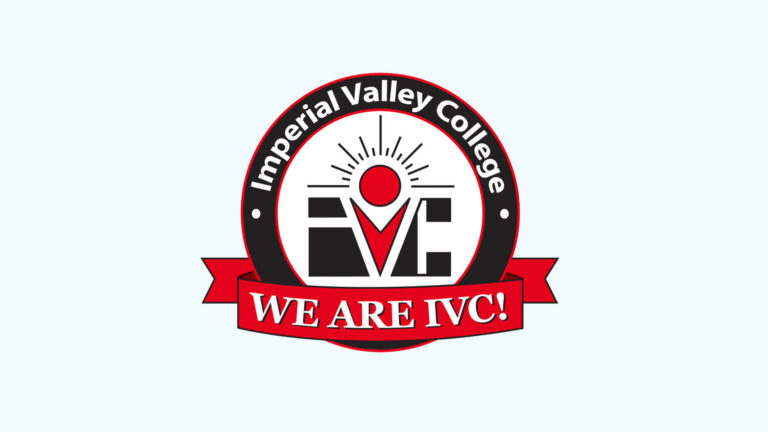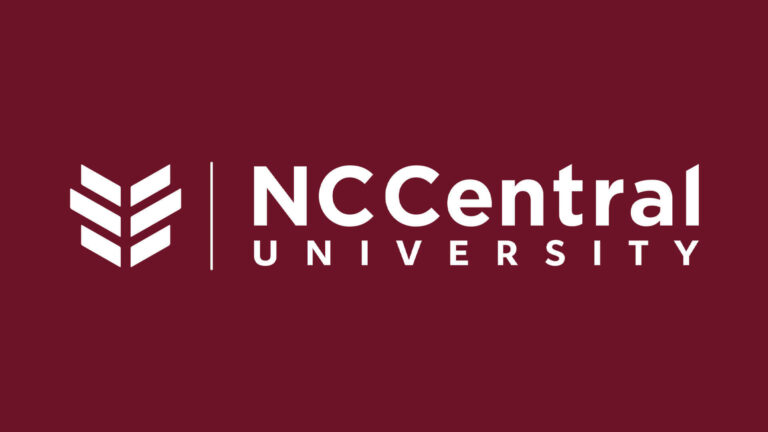Fraternities, sororities, and alumni are integral pillars of student life, so ensuring equal access for everyone is paramount. However, while physical barriers are widely acknowledged and accommodated, the digital realm often escapes the spotlight in terms of accessibility considerations.
Most institutions have factored digital accessibility into their websites, learning platforms, and course materials. Yet, digital inclusion is often more of an uphill struggle in the influential social organizations that intertwine with student life to shape experiences beyond classrooms and lecture halls.
The Vital Role of Fraternities, Sororities, and Alumni in Student Life
Fraternities and sororities are incubators for skills that extend beyond academic knowledge. They provide platforms for members to explore leadership roles, embrace philanthropy, and cultivate lifelong friendships, fostering teamwork, resilience, and a sense of responsibility.
Conversely, alumni associations bridge the temporal gap, ensuring each new generation benefits from the collective experiences of those who came before. They are essential in connecting graduates with a reservoir of collective wisdom, mentorship, and networking opportunities.
The Role of Technology in Fraternities, Sororities, and Alumni Organizations
Ensuring digital accessibility at every touchpoint is crucial if colleges and universities are to provide equitable and inclusive experiences for all.
Member Recruitment
As technology advances, digital platforms play an increasingly pivotal role in fraternity and sorority recruitment. For example, virtual tours, online information sessions, and social media outreach have become essential tools for introducing ethos and values to potential members.
Member Management
From digital communication channels to sophisticated databases that track involvement and achievements, technology’s role is vital. For example, online portals and mobile applications provide members with convenient access to schedules, resources, and updates.
Alumni Management
With alumni members spanning many decades – and countless geographical boundaries – digital channels play a crucial role. In fact, it would be almost impossible to maintain custodian and graduate relationships without incorporating virtual reunions, webinars, digital communication platforms, etc.
Digital Accessibility Challenges
Ensuring online spaces are welcoming to students with varying abilities demands both a nuanced understanding of accessibility standards and a proactive approach to ensure inclusivity. Online accessibility barriers can emerge in various forms, including:
- Physical Barriers – Examples include unintuitive navigation, lack of keyboard-only navigation, buttons, forms, and other interactive elements with clickable areas that are too small.
- Technology Barriers – Including browser compatibility issues, screen reader incompatibility, assistive technology limitations, and responsive design challenges.
- Communication Barriers – Such as lack of video captioning, insufficient language support, speech recognition challenges, and non-intuitive iconography.
- Systemic Barriers – Caused by overreliance on outdated design standards and content management systems, unnecessarily complex password policies, etc.
- Media Format Barriers – Such as insufficient color contrasts, poor font choice, untitled images, and video players without customizable playback options.
Top Tips for Building an Accessible Student Organization Website
It’s impossible to start making improvements if you don’t know what you’re doing wrong. So, the logical first step is to research the laws and policies that might affect your company. As a baseline minimum, you should ensure compliance with:
- Disabilities Act.
- Section 508 of the Rehabilitation Act.
- Any stand-alone state legislation that may apply to your website.
- The Web Content Accessibility Guidelines.
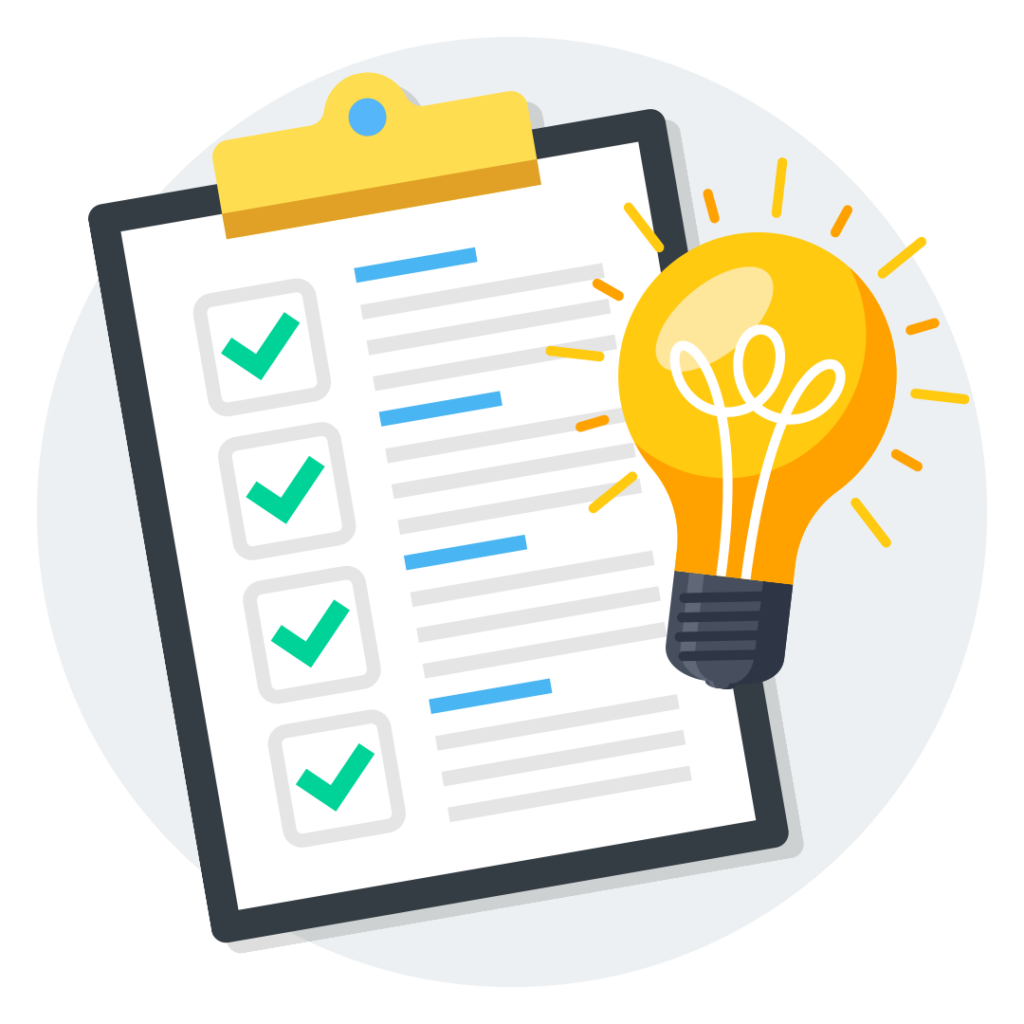
After this, employing web development professionals well-versed in accessibility standards and liaising with assistive technology experts is typically the best way to get your website up to scratch efficiently. Here’s a comprehensive list of steps to work through.
- Choose a content management system that supports accessibility.
- Ensure a responsive design across all devices (mobile, tablet, and desktop) with clear and consistent navigation.
- Design the website to be navigable using a keyboard alone, including interactive elements like buttons.
- Break down content into digestible sections with properly structured headers and subheadings.
- Use accessible color contrasts and font choices.
- Make media and multimedia content accessible by providing alt tags on images and graphics, and captions and transcriptions on videos and audio content.
- Give links suitably descriptive names
- Ensure forms and input fields are accessible by using proper labels and providing helpful error messages and clear instructions without relying solely on color cues.
- Run regular accessibility audits to identify and resolve accessibility compliance issues.
- Invest in assistive technology solutions like screen readers and voice recognition software to enhance individual user experiences.
Case Studies in Inclusion
Some digital inclusion challenges are relatively straightforward to overcome – by updating website design components and eliminating unnecessary barriers, for example. However, the most effective strategies often require a more comprehensive approach, encompassing expert guidance and the adoption of assistive technologies.
University of Liverpool
Liverpool is one of the UK’s oldest ‘red brick’ universities. It is home to over 22,000 students, including more than 7,700 international students and a further 10,000+ learning online from over 160 countries. Over 3000 of Liverpool’s student population have a disclosed disability.
So, in addition to linguistic support, more advanced software was required to ensure equitable access to university services.
“We added Recite Me to our website in 2017, and it ties all our accessibility activities together.”
Steven Summers, Assistive Technology Specialist, University of Liverpool
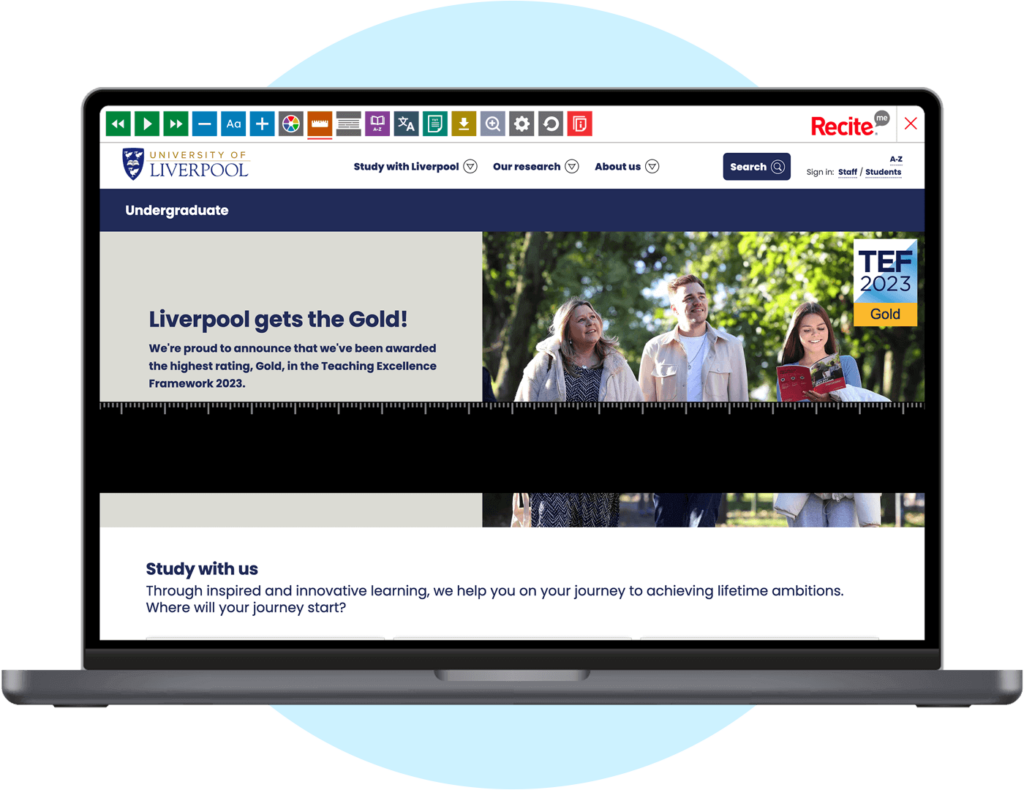
The Australian National University Students’ Association
The Australian National University Students’ Association (ANUSA) caters to over 10,000 undergraduate students. However, on average, 1 in 6 Australians (over 4.4 million people) have a disability that can make navigating websites and reading/communicating online challenging.
To provide additional support, ANUSA invested in online accessibility and language tools from Recite Me, allowing everyone equal access to crucial information and services.
“We love that the Recite Me toolbar has so many different functionalities to help make the website accessible and easy to use so that we can reach as many students as possible.”
Kate Melhuish, Communications Officer, ANUSA
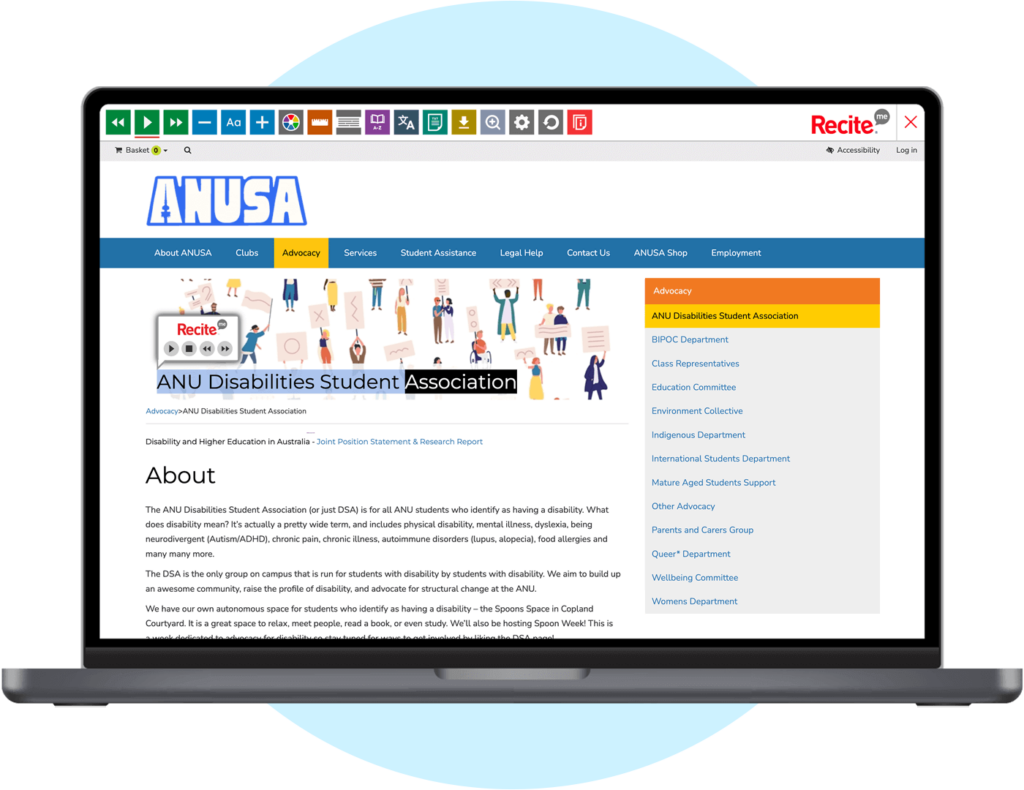
Start Your Organizational Journey Toward Digital Inclusion Today!
When you embrace website accessibility, it’s easier to cater to a broader customer base, demonstrate your commitment to inclusivity, and create a positive brand image that resonates with your diverse audience.
The Recite Me team is here to support your efforts to provide an inclusive and compliant website. We save you time and money by highlighting what needs to be fixed first for the most effective results and significant return on investment.
Don’t delay. Act today! Run a free scan of your website for WCAG 2.1 AA compliance, or contact our team for more information.

